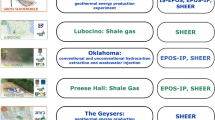Abstract
Hundreds of natural catastrophes occur worldwide every year—there were 780 loss events per year on average over the last 10 years. Since 1980, these disasters have claimed over two million lives and caused losses worth US$ 3,000 billion. The deadliest disasters were caused by earthquakes: the tsunami following the Sumatra quake (2004) and the Haiti earthquake (2010) claimed more than 220,000 lives each. The Great East Japan Earthquake of 11 March 2011 was the costliest natural disaster of all times, with total losses of US$ 210 billion. Hurricane Katrina, in 2005, was the second costliest disaster, with total losses of US$ 140 billion (in 2010 values). To ensure that high-quality natural disaster analyses can be performed, the data have to be collected, checked and managed with a high degree of expertise and professionality. Scientists, governmental and non-governmental organisations and the finance industry make use of global databases that contain losses attributable to natural catastrophes. At present, there are three global and multi-peril loss databases: NatCatSERVICE (Munich Re), Sigma (Swiss Re) and EM-Dat (Centre for Research on the Epidemiology of Disasters). They are supplemented by numerous databases focusing on national or regional issues, certain hazards and specific sectors. This paper outlines the criteria and definitions relating to how global and multi-peril databases are operated, and the efforts being made to ensure consistent and internationally recognised standards of data management. In addition, it presents the concept and methodology underlying the NatCatSERVICE database, and points out the many challenges associated with data acquisition and data management.








Similar content being viewed by others
References
Below R, Wirtz A, Guha-Sapir D (2009) Disaster category classification and peril terminology for operational purposes, Annex II. http:\\emdat.be
EM-Dat (2011) The International Disaster Database at http:\\emdat.be. Accessed 24 July 2011
Gall M, Borden KA, Cutter SL (2008) When do losses count? Six fallacies of natural hazards loss data. American Meteorological Society, June 2009, pp 799–809
Global Risk Identification Programme (GRIP) (2011) Disaster profiles. National data based profiles. http:\\gripweb.org. Accessed 24 July 2011
Guha-Sapir D and Below R (2002) The quality and accuracy of disaster data. A comparative analyses of three global data sets. ProVention Consortium
Guha-Sapir D, Hargitt D, Hoyois P (2004) Thirty years of natural disasters 1974–2003: The numbers, p 38. http:\\emdat.be
Munich Re (2001) Topics geo. Annu Rev Nat Catastrophes 2000:16–21
Munich Re (2003) NatCatSERVICE® a guide to the Munich Re database for natural catastrophes, p 5. www.munichre.com
Munich Re (2006) Topics geo. Annu Rev Nat Catastrophes 2005:14–17
Swiss Re (2011) sigma No. 1/2011, p 35. http:\\swissre.com
Tschoegl L, Below R, Guha-Sapir D (2006) An analytical review of selected data sets on natural disasters and impacts. http:\\emdat.be
Author information
Authors and Affiliations
Corresponding author
Rights and permissions
About this article
Cite this article
Wirtz, A., Kron, W., Löw, P. et al. The need for data: natural disasters and the challenges of database management. Nat Hazards 70, 135–157 (2014). https://doi.org/10.1007/s11069-012-0312-4
Received:
Accepted:
Published:
Issue Date:
DOI: https://doi.org/10.1007/s11069-012-0312-4




